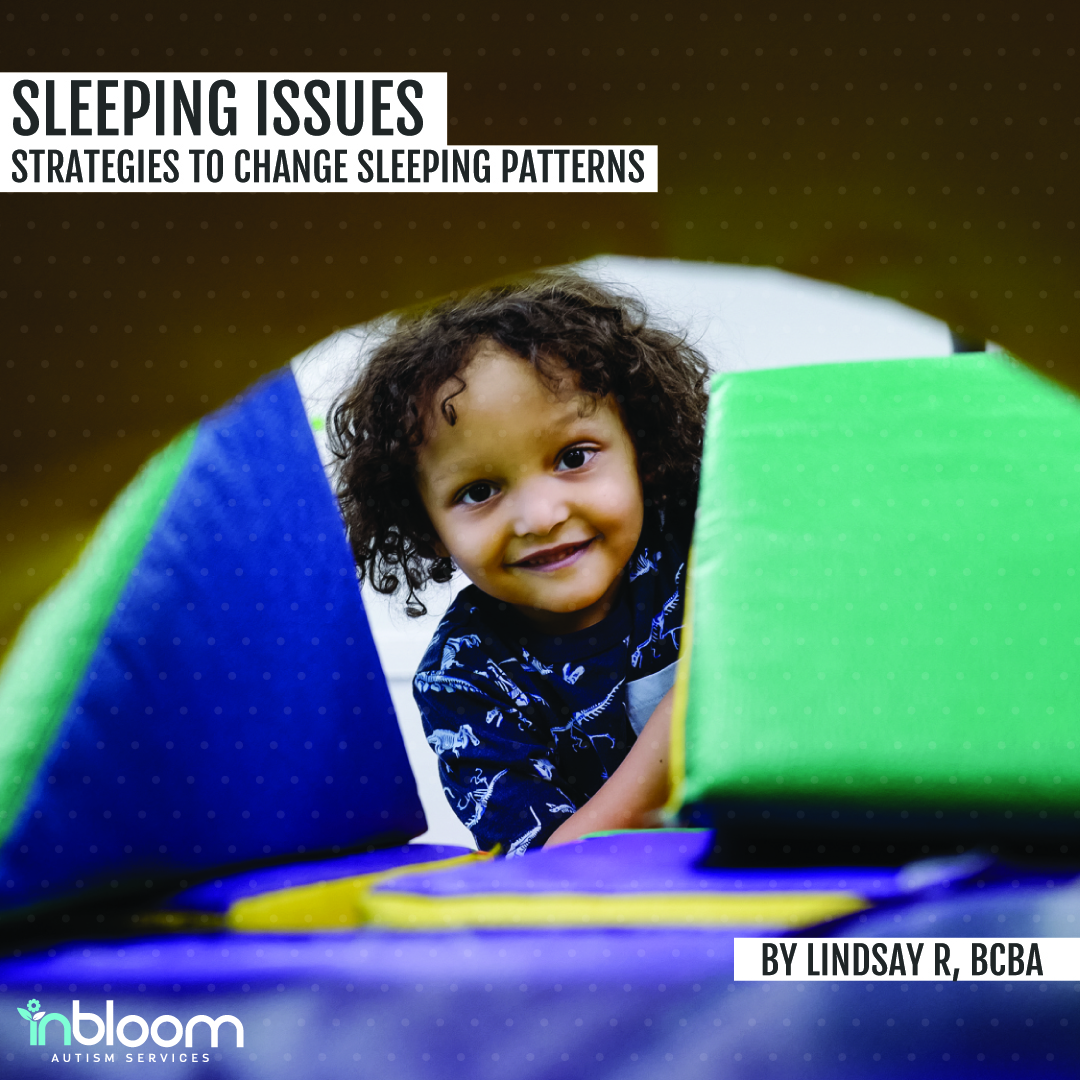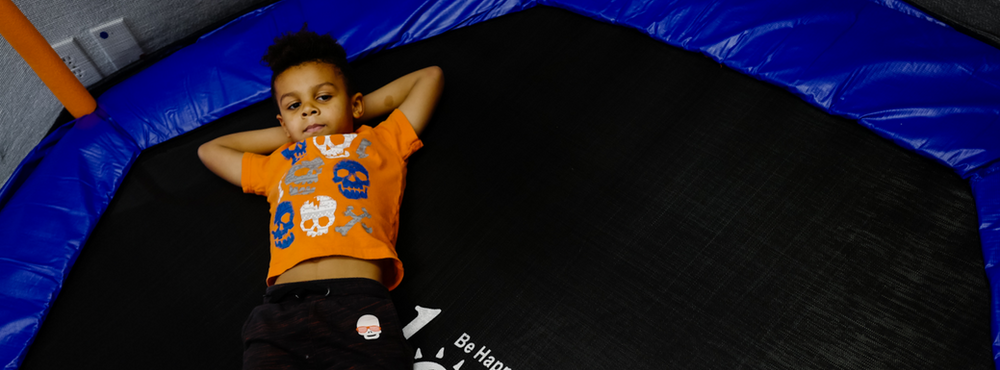December 14, 2020
Sleeping Problems and Autism: Tips to Change Sleeping Patterns

Just like any other child, children with Autism Spectrum Disorder (ASD) sometimes have difficulty going to sleep and staying asleep. However, studies show that sleep problems in children with autism children are more prevalent than in typically developing children. But don’t worry, we have some helpful insights and tips to ensure your child has the tools needed to get a good night’s rest!
Sleep Problems in Autism Explained
Several sleep problems that are commonly seen in children with autism include the following:
- Irregular sleep and wake patterns (e.g., lying awake until very late or waking very early in the morning)
- Sleeping much less than expected for their age
- Being awake for more than an hour during the night
- Getting up and playing or making noise for one or more hours during the night
- Excessive sleepiness during the day
It has been found that sleep disturbances can have lasting negative effects on children’s cognitive development and daily functioning in various areas, including attention, learning, memory, mood, and behavior. In turn, this also affects parents’ sleep quality.
InBloom Autism Services helps children improve their daily living skills like creating a sleep routine through customized ABA Therapy. Learn more!
Average Sleep Requirements For Children
You might be wondering, “How much sleep is my child even supposed to get?!”
Every child needs a slightly different amount of sleep. However, in general, these are the average sleep requirements for children:
- Newborn–1 year old: 14 to 16 hours per day
- 1–3 years old: 12 to 14 hours per day
- 3–6 years old: 10 to 12 hours per day
- 7–12 years old: 10 to 11 hours per day
So, if your child is not getting the appropriate amount of sleep for their age, consider some of the tips outlined below to improve their sleep quality!

Tips For Managing Sleep Problems for Children with Autism
How To Develop Healthy Sleep Routines & Habits
- Develop a consistent bedtime routine that involves your child participating in a few enjoyable, low-energy activities in the 20-30 minutes before bedtime. Some examples include taking a bath (if your child likes bath time), doing puzzles, or story time.
- Try to limit screen time or stimulants, such as caffeine and sugar, right before bed.
- Set a consistent, age-appropriate bedtime. An appropriate bedtime is when your child is sleepy, but not overtired. Furthermore, set a consistent wake time, so your child can get used to going to sleep and waking up at the same time every day.
- Give your child plenty of warning that bedtime is approaching. You can use a timer, verbally warn your child (e.g., “10 more minutes until bedtime!”), use a visual to show your child that it’s almost bedtime, or you could even use all three strategies together! Some families also turn on relaxing music to signal an upcoming bedtime. Feel free to get creative, while also remaining consistent with the approaches that you use. Choose something that you can use or do whenever and wherever you are.
- Teach your child to fall asleep alone. All children and adults wake up briefly throughout the night, but quickly put themselves back to sleep by practicing what they typically do at bedtime. So, if your child needs a parent present to fall asleep at bedtime, it is likely that he/she might need a parent to help him/her fall back asleep in the middle of the night.
- Quietly and calmly put your child back to bed if they get out and need your help to fall back asleep. Try to give your child minimal attention during this process. You may need to do this many times––especially if you’re just beginning to implement a new bedtime routine.
Ready to start your ABA Therapy journey with InBloom? Call 888-754-0398 to speak to a member of our Care Team or fill out our preliminary contact form.
How To Create A Healthy Sleep Environment
- Lights Off: Your child’s bedroom should be dark, quiet, and cool. If the room is too dark, add a dim nightlight. If light shines into the room, put heavy curtains on your child’s windows.
- Quiet Room: The bedroom should be quiet at night. Try to limit noise from other siblings or TV, computers, video games, or music in rooms nearby. Some children may find white noise or a low, quiet, consistent background sound (e.g., a ceiling fan) soothing.
- Comfortable Temperatures: Make sure that the temperature of the room and choice of bedding feel comfortable to your child and fit with his/her sensory needs. Additionally, it’s important to think about things such as the weight, fit, and fabric of your child’s pajamas.
In summary, sleep difficulties are very common in children with ASD. If you feel that your child has inconsistent sleep patterns or displays poor-quality sleep, try implementing some of these tips. Also, be sure to discuss these challenges with your child’s therapy team or pediatrician- they may also have more recommendations. Here’s to a good night’s sleep – don’t let the bedbugs bite!
Written by: Lindsay R. – BCBA
InBloom Autism Services specializes in early intervention ABA Therapy. Our Therapists undergo training to develop a curriculum specifically designed for children aged 5 and under with autism. Our Learning Centers also offer a safe and enjoyable environment for children to interact with their peers. Find a Learning Center Near You!
Related Blogs:
The Positive Effects of ABA Therapy for Children with Autism
Mealtime Made Easier: Practical Tips for Parents
————————————-
References:
Margaret, S. C., PhD, CRNP, Mason, T. B., MD, PhD, MSCE, Valladares, O., MS, Bucan, M., PhD, Levy, S. E., PhD, Mandell, D. S., ScD, . . . Pinto-Martin, J., PhD, MPH. (2009). Sleep Behaviors and Sleep Quality in Children with Autism Spectrum Disorders. Sleep, 32(12). doi:10.1093/sleep/32.12.1556
Sleep problems: Children with autism spectrum disorder. (2020, May 06). Retrieved July 05, 2020, from, https://raisingchildren.net.au/autism/health-daily-care/sleep/sleep-problems-children-with-asd
Weiss, S. K., MD, FRCPC, & Malow, B. A., MD, MS. (n.d.). Strategies to Improve Sleep in Children with Autism Spectrum Disorders: A Parent’s Guide.


